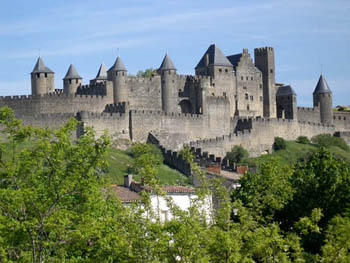Carcassonne is a very ancient town: its name was mentioned by Plinio the Old in the I century BC but the upper town, the Cité, dates back 2,500 years. Carcassonne indeed rises on an important way of transit between the Mediterranean and the Atlantic. During the Roman epoch it used to be an oppidum and greatly developed as of the Carolingian Age. The feud was held by the viscounts Trencavel and was besieged by Simon de Monfort in 1209, during the crusade against the Albigenses. Even Carcassonne surrendered because of water insufficiency and was annexed to the royal properties in 1224. In 1240 Raymond II Trencavel headed a civic rebellion and Louis IX moved the upper town population to the valley in order to soothe the riot; here the Bastide was built on the left bank of the Aude. Even today Carcassonne boasts two valuable old towns: the Cité is a great example of fortified citadel, partially reconstructed in the XIX century thanks to the architect Eugène Viollet-le-Duc. It preserves some of the walls and towers that date back to the Gaulish-Roman epoch and a second structure of medieval enclosure walls, the count’s castle and the Romanesque-Gothic basilica of Saint-Nazaire (XI-XIII c.). The citadel is included in the UNESCO World Heritage List.
